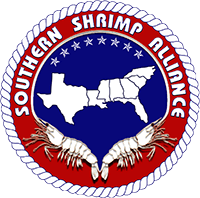The U.S. Food and Drug Administration (FDA) today released to the public information regarding entry line refusals for the month of August. The agency reported refusing a total of 207 seafood entry lines last month. Of these, 72 (35%) were of shrimp entry lines refused for reasons related to banned antibiotics.
The refusals of 72 separate entry lines of shrimp for reasons related to antibiotics is the highest amount reported by FDA for any month going back to 2002. With fourteen years worth of data available through the agency’s website, the top five months for shrimp entry line refusals have occurred during the first eight months of this year:
|
Rank
|
Month
|
Shrimp Entry Line Refusals for Antibiotics
|
|
1
|
August 2015
|
72
|
|
2
|
March 2015
|
58
|
|
3
|
January 2015
|
58
|
|
4
|
July 2015
|
54
|
|
5
|
April 2015
|
51
|
Through last month, the FDA has now refused a total of 358 entry lines of shrimp products for reasons related to banned antibiotics. This exceeds the total amount of entry lines of shrimp refused by the FDA for the same reasons over the three previous years (338).
The record number of refusals in August involved shrimp shipped from China, India, Indonesia, and Malaysia. The majority of the entry lines refused (49 of the 72) originated from the same Malaysian exporter:
- Fishergold Cold Storage Sdn. Bhd. (Malaysia), a company listed on Import Alert 16-129 for nitrofurans on March 10, 2015 but not currently listed on Import Alert 16-124, had thirteen entry lines refused for shrimp contaminated with nitrofurans, veterinary drug residues, and salmonella, twenty-one entry lines refused for shrimp contaminated with nitrofurans and salmonella, and another fifteen entry lines refused for shrimp contaminated with veterinary drug residues and salmonella, all in the Southwest Import District;
- Ria Budimas Trading (Malaysia), a company listed on Import Alert 16-129 for nitrofurans on March 2, 2015 at two different addresses but not currently listed on Import Alert 16-124, had six entry lines refused for shrimp contaminated with both nitrofurans and veterinary drug residues in the New York District;
- Omega Frozen Sdn. Bhd. (Malaysia), a company not currently listed on either Import Alert 16-124 or Import Alert 16-129, had six entry lines refused for shrimp contaminated with nitrofurans in the Southwest Import District;
- Sea Oyster Packer (Malaysia), a company newly listed (August 6, 2015) on Import Alert 16-129 for nitrofurans but not currently listed on Import Alert 16-124, had three entry lines refused for shrimp contaminated with nitrofurans and veterinary drug residues in the Los Angeles District;
- PT Bumi Menara Internusa (Indonesia), a company listed on Import Alert 16-129 for nitrofurans on June 8, 2015 but not currently listed on Import Alert 16-124, had four entry lines of refused for shrimp contaminated with veterinary drug residues in the Los Angeles District;
- Sharat Industries (India), a company listed on Import Alert 16-129 for nitrofurans on March 9, 2015 but not currently listed on Import Alert 16-124, had three entry lines of refused for shrimp contaminated with both nitrofurans and veterinary drug residues in the New York District; and
- Zhanjiang Fuchang Aquatic Products Co Ltd (China), a company not currently exempted from Import Alert 16-131, had one entry line refused for breaded shrimp contaminated with veterinary drug residues in the Los Angeles District.
The FDA also recently changed the format of its website reporting of entry line refusals. The new portal (which can be accessed here: http://www.accessdata.fda.gov/scripts/importrefusals/) includes a description of the entry line refusal process.
First, the FDA makes a determination to detain a product “that appears to be out of compliance.” Next, the FDA district office issues a “Notice of FDA Action” specifying the nature of the violation to the owner of the shipment or the shipment’s consignee. Once that notice is issued, the owner/consignee is entitled to an informal hearing regarding the FDA’s detention determination. If the owner fails to demonstrate that the imported good is, in fact, in compliance with FDA rules or fails to submit a plan as to how to bring the product in compliance, the agency issues a “Notice of FDA Action” formally refusing admission to the imported goods. Once this notice is issued, the goods must be exported or destroyed within 90 days.
The FDA’s reporting of import entry line refusals regards only those products where the administrative process has reached the point of a “Notice of FDA Action” refusing admission. This means that refusal date reported by the agency should generally be later than the date when the goods were attempted to be entered into the U.S. market.
The lag time between the arrival date of shrimp imports and the refusal dates reported can sometimes explain why shipments continue to arrive at a port even after an FDA district office has made a finding that exports from a particular company are contaminated with banned antibiotics. This lag time, however, does not explain the continued high volume of refusals of entry lines of shrimp shipped from Malaysia. Nor does it explain the consistent appearance of ostensibly “new” exporters of shrimp from Malaysia. FDA’s reporting of refusals of shrimp shipments from Malaysia is unprecedented and begs the question as to why importers in the United States continue to attempt to source shrimp from these questionable suppliers.
